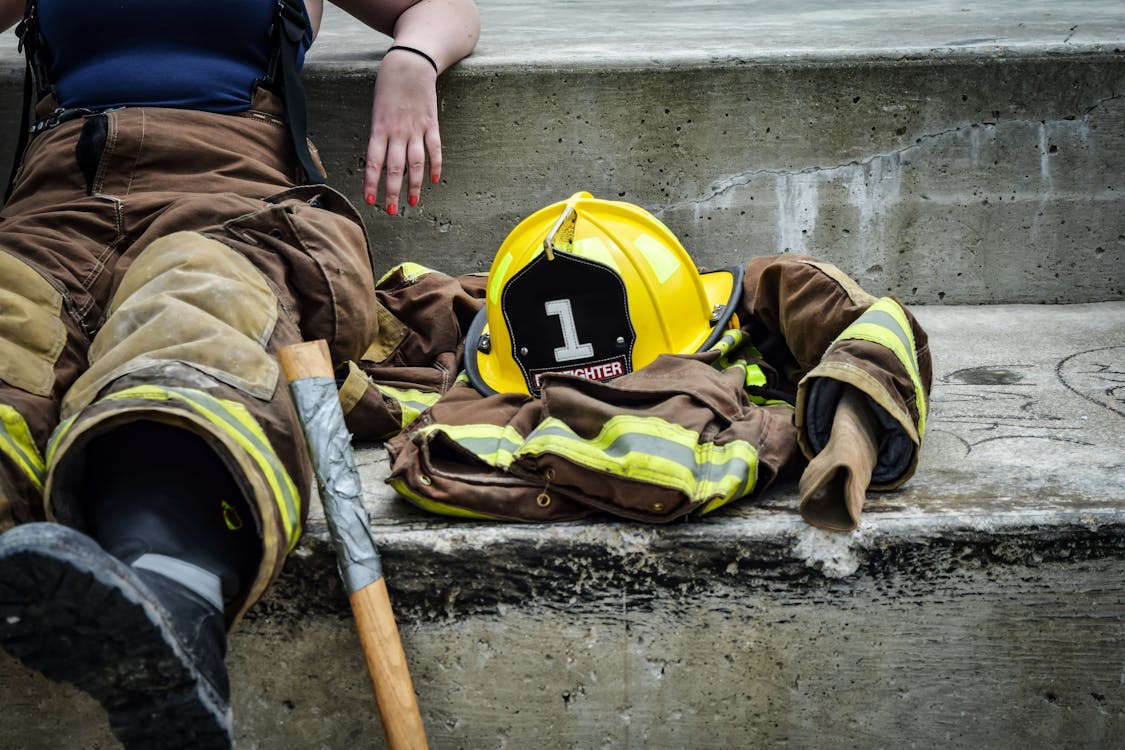Five Risks Involved With a Military Firefighting Profession
If you’re considering a career in military firefighting, you must understand the risks involved. As you embark on this noble profession, knowing what you may encounter can help you prepare both mentally and physically. Military firefighting isn’t just about battling flames; it comes with its own set of challenges and dangers that you need to be aware of.
This article will explore a few key risks associated with the military firefighting profession.

Exposure To Hazardous Materials
Exposure to harmful chemicals is a significant risk for military firefighters. These hazardous materials pose immediate threats to their health and safety. Therefore, proper training and protective gear are essential for minimizing risks.
These firefighters often face exposure to hazardous materials in tough conditions. In these environments, they encounter additional dangers, such as enemy attacks and improvised explosive devices. The presence of hazardous materials exacerbates the already high-risk situations they encounter. Thus, vigilance and quick thinking are crucial for their safety.
Despite rigorous safety protocols, exposure to hazardous materials remains a constant threat. Even during routine training exercises, these firefighters must contend with the risks associated with handling dangerous substances. Therefore, ongoing risk assessment and mitigation strategies are vital to ensure their well-being on the job.
Recent studies have highlighted the presence of toxic chemicals such as PFAS near military bases. According to ACS Publications, PFAS-contaminated drinking water is widespread at more than 300 U.S. military bases where AFFF was utilized for fire training. These harmful chemicals often convert into harmful compounds over time. Although the use of AFFF has been eliminated, terminal PFAS levels still remain extremely high.
According to TorHoerman Law, AFFF was utilized during training exercises at military airports and in other applications to douse highly flammable liquid fires. Exposure to these chemicals results in chronic health conditions such as cancer. These health conditions can pose serious risks to one’s financial and emotional well-being.
However, military personnel can partner with qualified lawyers to seek legal remedies. If victims can prove their health conditions stem from AFFF exposure, they qualify for compensation under the Veterans Affairs (VA) program. VA claims for exposure to AFFF can help victims receive well-deserved compensation for their loss. Through these actions, victims can also seek disability benefits, thus helping them overcome different life challenges.
Combat Zones
Operating in combat zones poses grave risks for military firefighters. They confront heightened dangers such as enemy attacks and improvised explosive devices.
These firefighters must navigate through chaotic environments where hazards lurk around every corner. The unpredictable nature of combat zones amplifies the challenges they face. Despite these risks, they remain steadfast in their mission to protect lives and property amidst adversity.
In combat zones, these firefighters often find themselves in high-pressure situations requiring quick decision-making and effective action. Despite the inherent dangers, their dedication to duty remains unwavering.
High-Pressure Situations
Navigating through high-pressure situations is a common occurrence for military firefighters. Amid the chaos, these firefighters must maintain their cool under pressure. Adhering to strict protocols and utilizing their training, they strive to contain fires and prevent further escalation.
The physically and mentally demanding nature of high-pressure situations takes a toll on these firefighters. They face immense stress and adrenaline-fueled challenges as they battle fires and rescue individuals in peril. Despite the hardships, their dedication to their duty drives them to persevere and protect their fellow service members and civilians.
Physical Demands
The physical demands of the military firefighting profession are immense. Operating in hazardous environments puts significant strain on the body. Firefighters must carry heavy equipment, navigate uneven terrain, and endure extreme temperatures. These physical exertions can lead to musculoskeletal injuries such as strains, sprains, and fractures.
The nature of the military firefighting occupation is extremely demanding, making individuals vulnerable to different life-threatening conditions. Studies have shown that they are susceptible to cancer and cardiovascular diseases, among others.
According to the International Association of Fire Fighters (IAFF), about 72% of firefighters died from cancer in 2023. Exposure to harmful chemicals during firefighting operations enhances the risk of various cancers such as lung, prostate, and colon cancer. In addition, cardiovascular disease is responsible for nearly 45% of all firefighter-duty-related fatalities.
Psychological Stress
Psychological stress is a significant risk factor for military firefighters. They often encounter traumatic events during their duty, leading to emotional strain and mental health challenges.
The demanding nature of firefighting in military settings exacerbates psychological stress. These firefighters must cope with the pressures of combat zones, high-stress situations, and witnessing traumatic events. These factors contribute to heightened levels of stress and anxiety among personnel.
Despite the rigorous training and support systems in place, psychological stress remains a persistent challenge for these firefighters. It is essential to prioritize mental health resources and interventions to help them cope with the psychological toll of their profession effectively.
According to the American Psychological Association, military service members experience many factors that can affect their mental health negatively. This study aimed to examine a few factors that lead to poor mental health in a challenging naval environment.
According to the findings, about 25% of respondents faced no poor mental health days in the last month. However, about 12.5% experienced declining mental health every day. The findings revealed that organizational support emerged as a significant tool in addressing the situation.
Frequently Asked Questions (FAQs):
What Is the Highest Risk Factor for Firefighters?
The highest risk factor for firefighters is exposure to hazardous materials. They encounter dangerous substances during firefighting operations, increasing health risks. These materials pose immediate threats to their well-being. Proper training and protective gear are essential.
What Branch of the Military Is Best for Firefighting?
The branch of the military best for firefighting varies. Each branch has specialized firefighting units. The suitability depends on individual preferences and career goals. It’s essential to research and evaluate options thoroughly.
What Is the Most Difficult Aspect of Firefighting?
The hardest part of being a firefighter is the emotional toll. They witness traumatic events and risk their lives. The constant exposure to danger and stress can lead to mental health challenges. It requires resilience and support to cope effectively.
In conclusion, from exposure to hazardous materials and operating in combat zones, firefighters must navigate numerous challenges. Plus, the psychological stress associated with the job can take a toll on mental well-being.
Despite these risks, military firefighters remain dedicated to their duty of saving lives and property. They need to receive adequate resources and training to mitigate these risks effectively and ensure their safety on the job.







